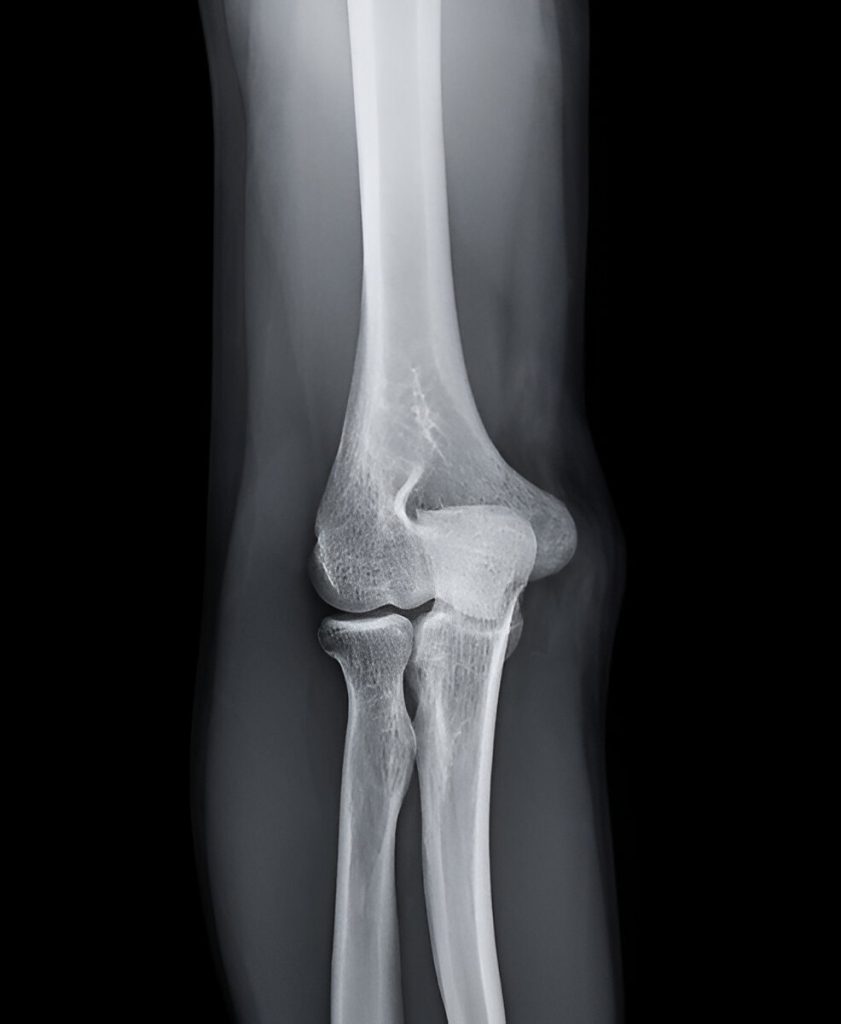What Is an Olecranon Fracture?
An olecranon fracture is a break in the bony tip of the elbow, part of the ulna—one of the two forearm bones. The olecranon forms the pointed end of the elbow and serves as the attachment site for the triceps tendon, allowing extension of the elbow.
This injury can vary from a simple, nondisplaced crack to a complex break with displacement, joint involvement, or multiple fragments. Because the olecranon is exposed and lacks protective soft tissue, it is particularly vulnerable to trauma.
What Is an Olecranon Fracture?
An olecranon fracture is a break in the bony tip of the elbow, part of the ulna—one of the two forearm bones. The olecranon forms the pointed end of the elbow and serves as the attachment site for the triceps tendon, allowing extension of the elbow.
This injury can vary from a simple, nondisplaced crack to a complex break with displacement, joint involvement, or multiple fragments. Because the olecranon is exposed and lacks protective soft tissue, it is particularly vulnerable to trauma.
Causes and Risk Factors
-
Direct impact to the elbow, such as a fall onto a bent arm
-
Indirect trauma, such as a fall onto an outstretched hand that transmits force to the elbow
-
Motor vehicle collisions
-
Sports-related falls or impacts, especially in cycling, skiing, or skateboarding
-
Osteoporosis or weakened bones, especially in older adults
Symptoms
-
Sudden, sharp pain at the back of the elbow
-
Visible deformity or swelling around the tip of the elbow
-
Inability to fully extend the elbow
-
Tenderness over the olecranon
-
Bruising or open wound in the case of a compound fracture
-
Weakness when pushing or straightening the arm
Diagnosis
-
Clinical examination, noting pain, swelling, and elbow extension weakness
-
X-rays to assess the location, number of fragments, and displacement of the fracture
-
In complex cases, a CT scan may be ordered to evaluate joint involvement
-
Evaluation for associated injuries, such as radial head fractures or ligament damage
Treatment
Non-Surgical Treatment
-
Appropriate for non-displaced fractures
-
Involves:
-
Immobilization in a posterior splint or brace for 4–6 weeks
-
Activity modification and pain control with NSAIDs
-
Gradual introduction of physical therapy to restore motion and strength
-
Surgical Treatment
-
Recommended for displaced, open, or unstable fractures
-
Common surgical options include:
-
Tension band wiring: For simple fractures
-
Plate and screw fixation: For comminuted or unstable fractures
-
Excision and triceps reattachment: Occasionally used in elderly patients with poor bone quality
-
-
Surgery aims to restore elbow alignment, function, and range of motion
Recovery Outlook
-
Healing typically occurs within 6 to 12 weeks
-
Physical therapy begins after initial immobilization and may continue for several months
-
Full recovery—including return to sports or heavy labor—may take 3 to 6 months
-
Most patients regain good elbow function, though mild stiffness can persist in some cases
Why Kerlan Jobe Institute?
At Kerlan Jobe Institute, our orthopedic trauma specialists offer precise diagnosis and expert management of olecranon fractures, ensuring a tailored recovery plan that restores elbow strength and mobility.

